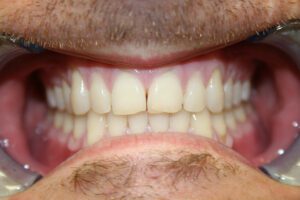 Instant dental implant has its pros and cons. Specialists on subject of implants have taken a view that immediate loading of implants can be riskier due to the undefined and unexplored diagnosis that relates to it. It is primarily because of this reason that general practitioners are not recommended to undertake such early implants. Having said it, it is anticipated that a revolutionary diagnosis and treatment in such implants will be available to the masses soon.
Instant dental implant has its pros and cons. Specialists on subject of implants have taken a view that immediate loading of implants can be riskier due to the undefined and unexplored diagnosis that relates to it. It is primarily because of this reason that general practitioners are not recommended to undertake such early implants. Having said it, it is anticipated that a revolutionary diagnosis and treatment in such implants will be available to the masses soon.
Osseointegration is basically a reaction that the bony tissues show as a result of the implants to the affected area. There is a healing period span of around three to six months for implants relating to oral endosteal before loading and considered to be pre-requisite for maximum bone apposition vis-à-vis the fixture (however, in many studies on animals and humans, such three to six months healing period was cut short to an early loading protocol. In other instances, implants were forthwith loaded and on the same day of insertion). The aforesaid method was derived from the workings of Branemark somewhere in the 1970s, who worked on the healing of upper and lower jaw and its proposed time frames, on the basis of failure frequencies relating to such surgeries.
The aforesaid practice on Osseointegration was conducted in varying adverse conditions and concurrently the different implants and their modes kept on changing, for example with patients who had degenerating bone quality, using implants of shorter lengths, lower than maximum implant designs and surgical procedures etc.
Regarding the healing of bone post implant placement surgery, there are numerous viewpoints. It is opined that reaction known as perimplant bone reaction, instantly after the surgery, is at its optimum and reduced with the passage of time. Even after the lapse of three to six months standard healing time frame, the remodeling of the bone would continue to occur.
Hence, in view of the foregoing, it will not be reasonable to ascertain a generic healing period with respect to the type of a certain jaw.
Best way to determine the healing period is to physically examine the implant and bone concerned before as well as after the surgery. Certain new ways of such measurements are because traditional methods of evaluating peri-implant bone conditions (such as X-rays, percussion and turn out tests etc) are unsuitable for this measurement, Hence, new methods are now being resorted to which includes resonance frequency analysis as introduced by in 1996 by Meredith and others and the cutting resistance measurement in between implant placement as introduced in 1994 by Johansson & Strid.
It is believed that the above two relatively newly introduced methods provide an objective view of the stability of the implant whereas the earlier methods were solely based on subjective grounds.
Osseointegration method (as based on the notion of late loading for a span of about twenty years) is subject to doubts by numerous quarters.
The case selection relating to operator based case is based on subjective grounds, as is evident from all the modes adopted as of late. Those based on the objective criteria, it is being said, have not been published.

